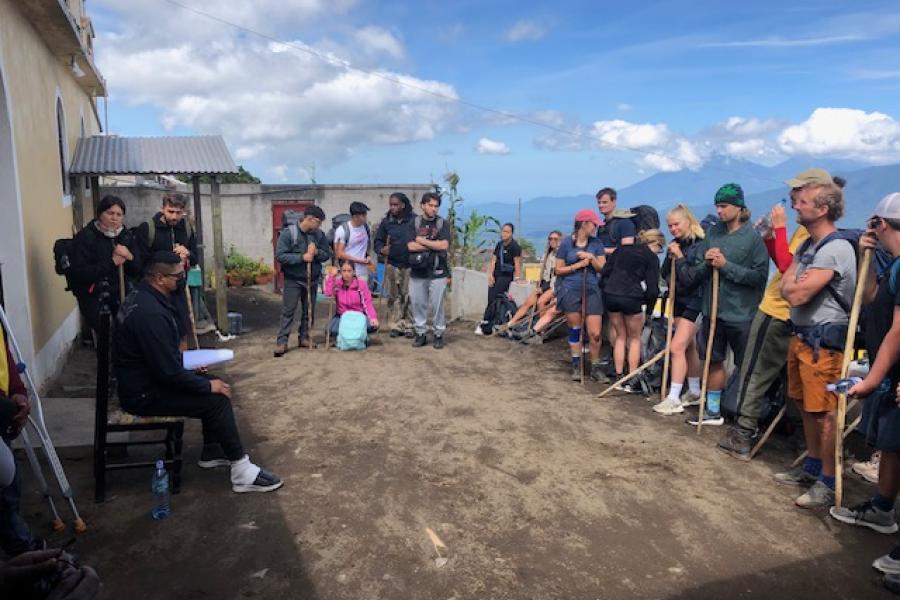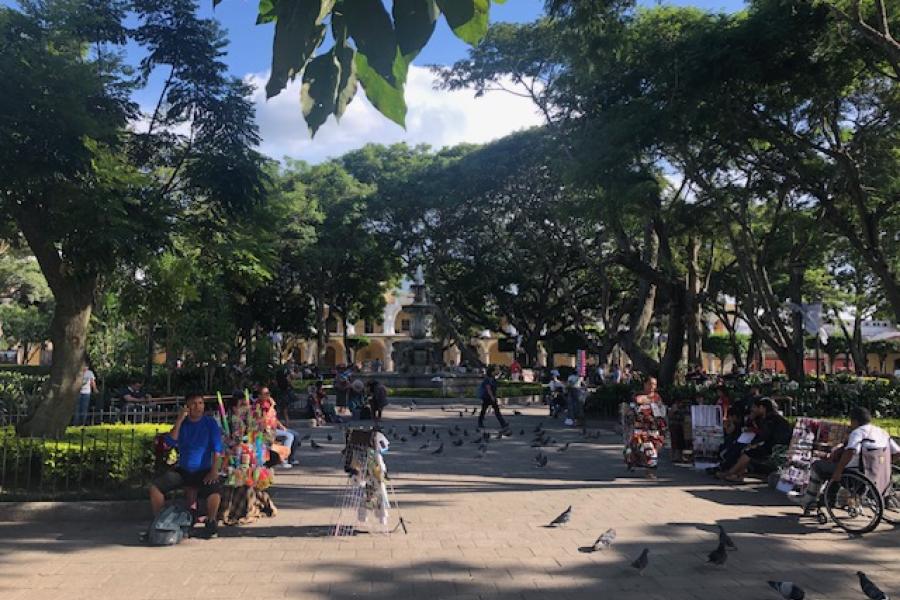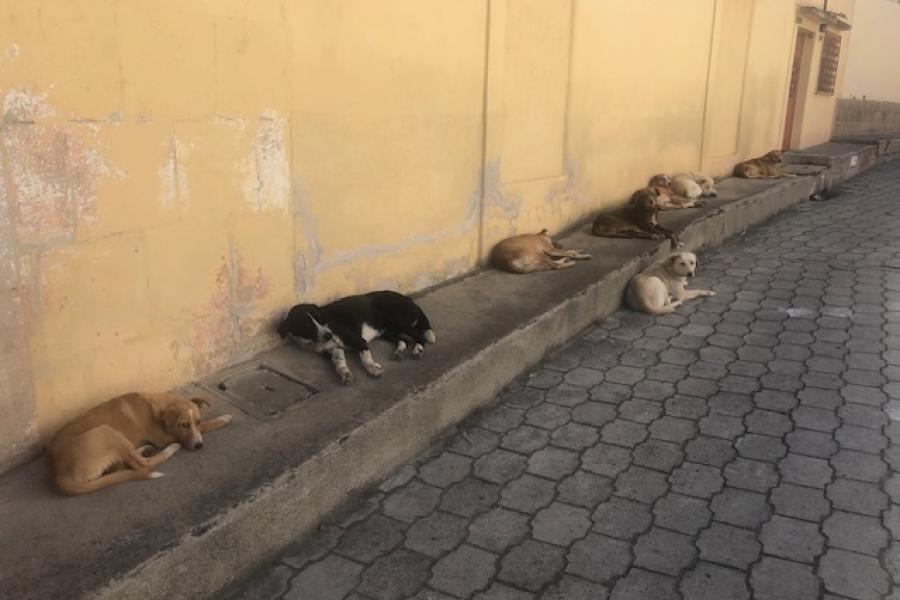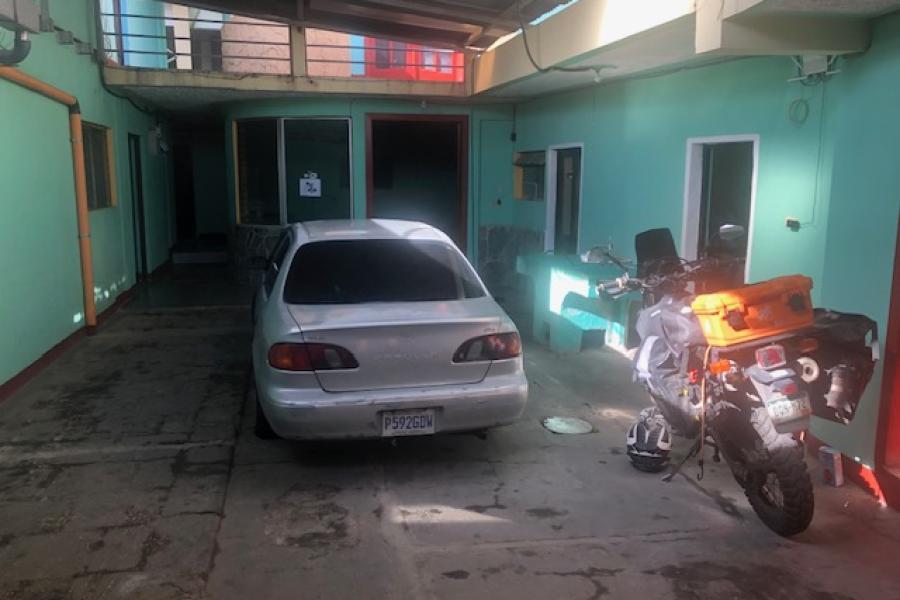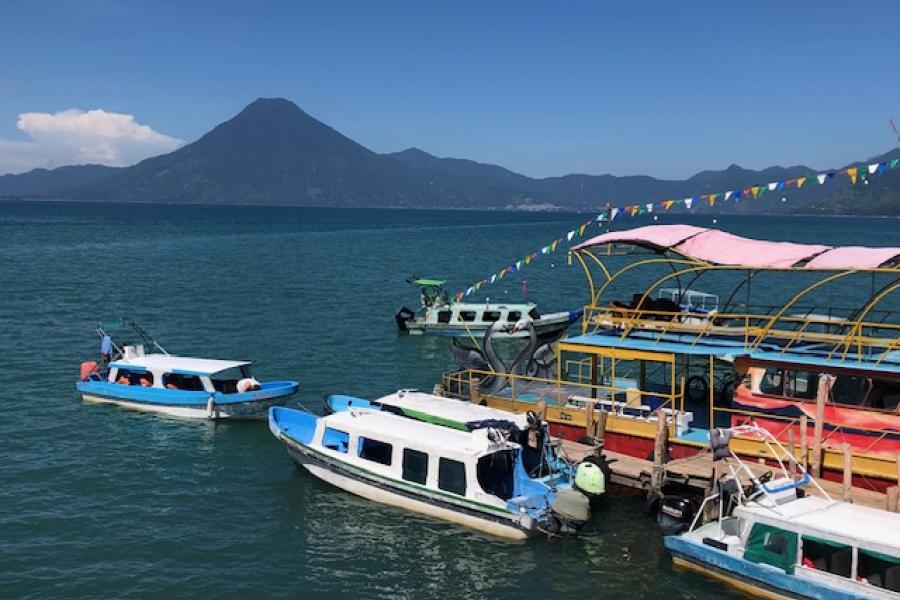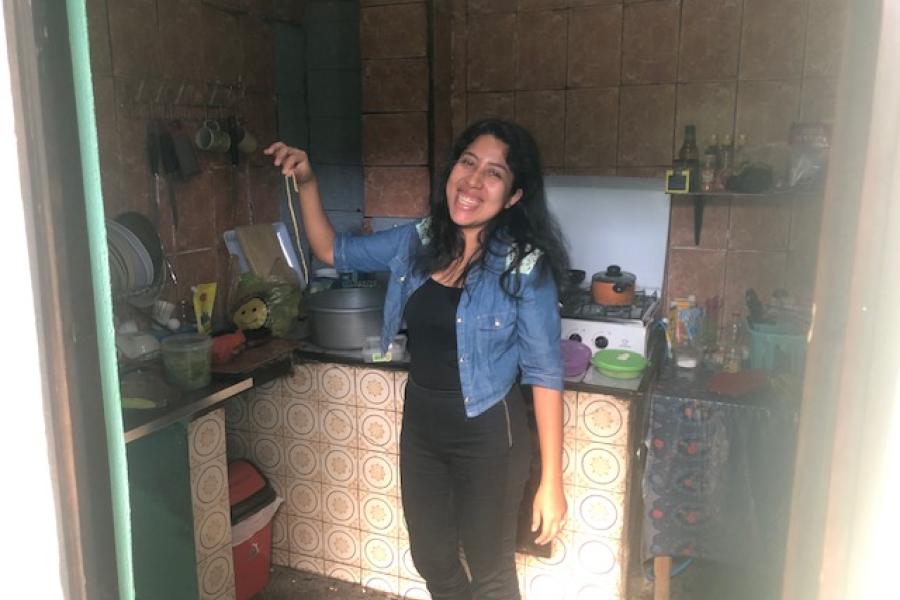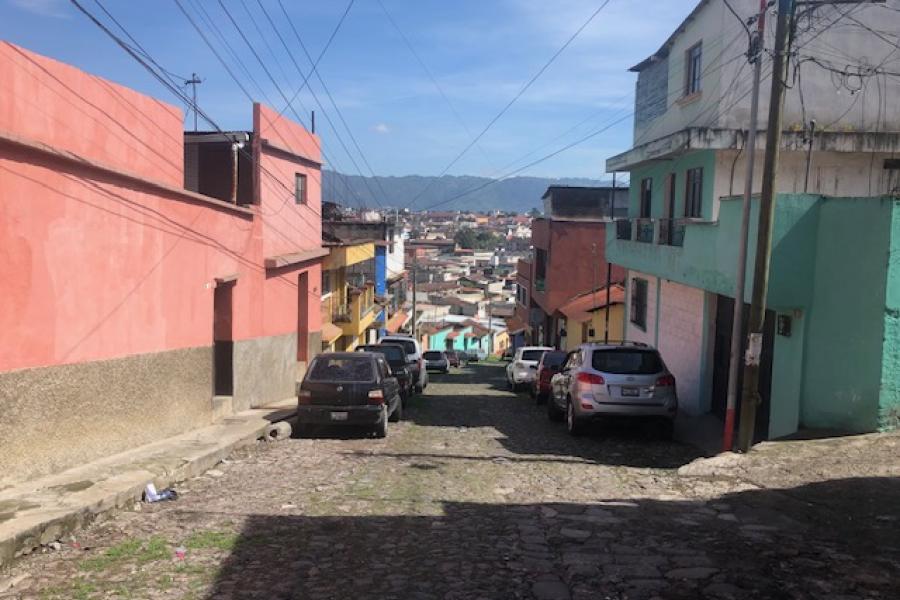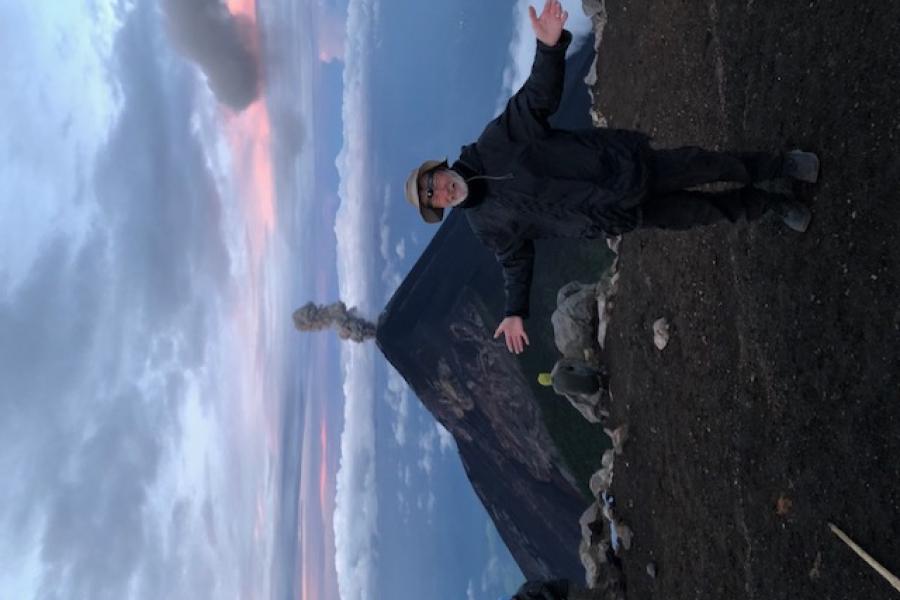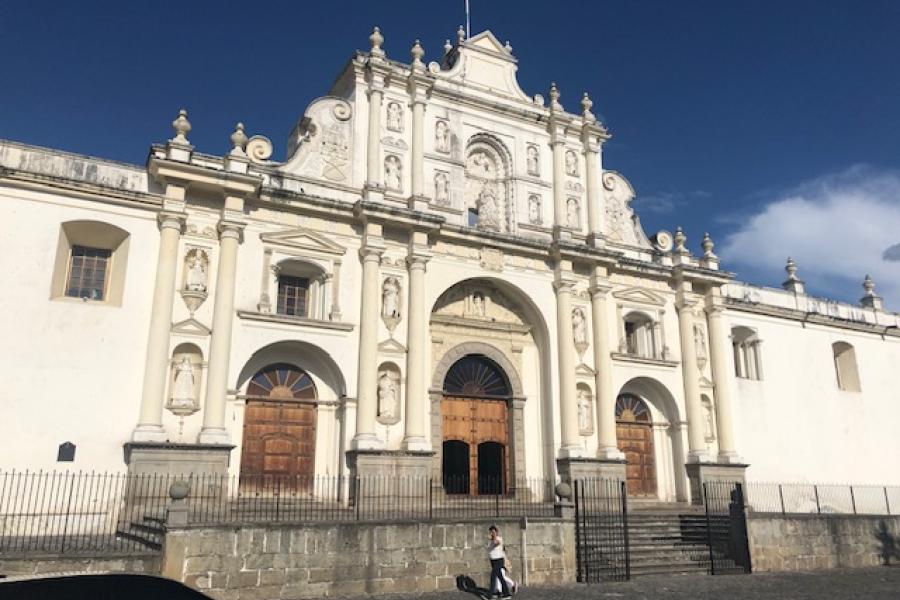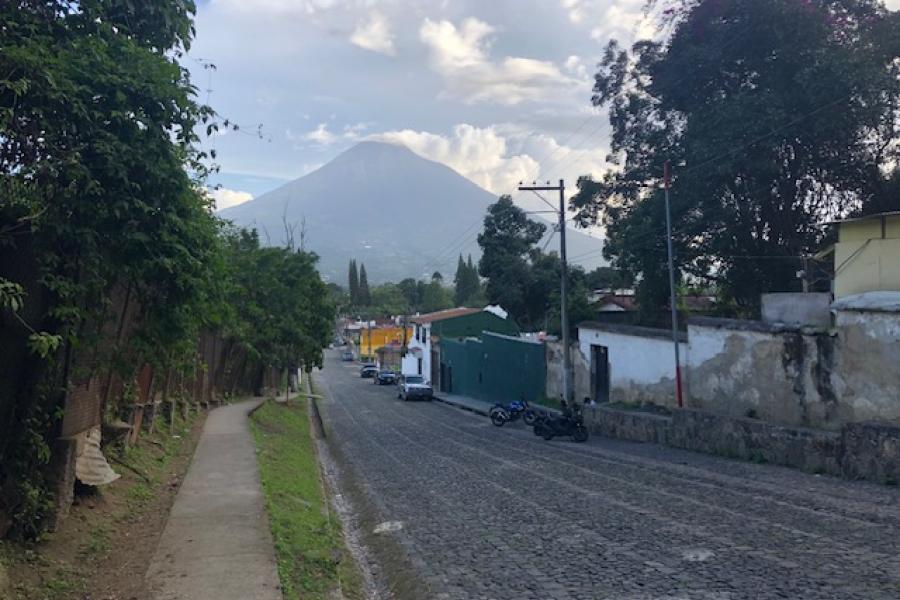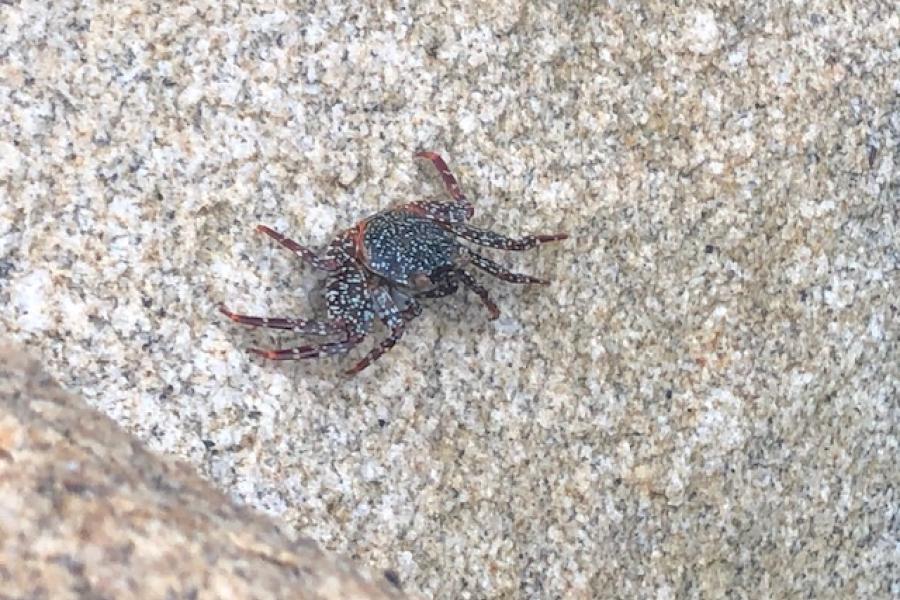Oaxaca, Mexico → Antigua, Guatemala
Country
I've finally left North America. Woo hoo.
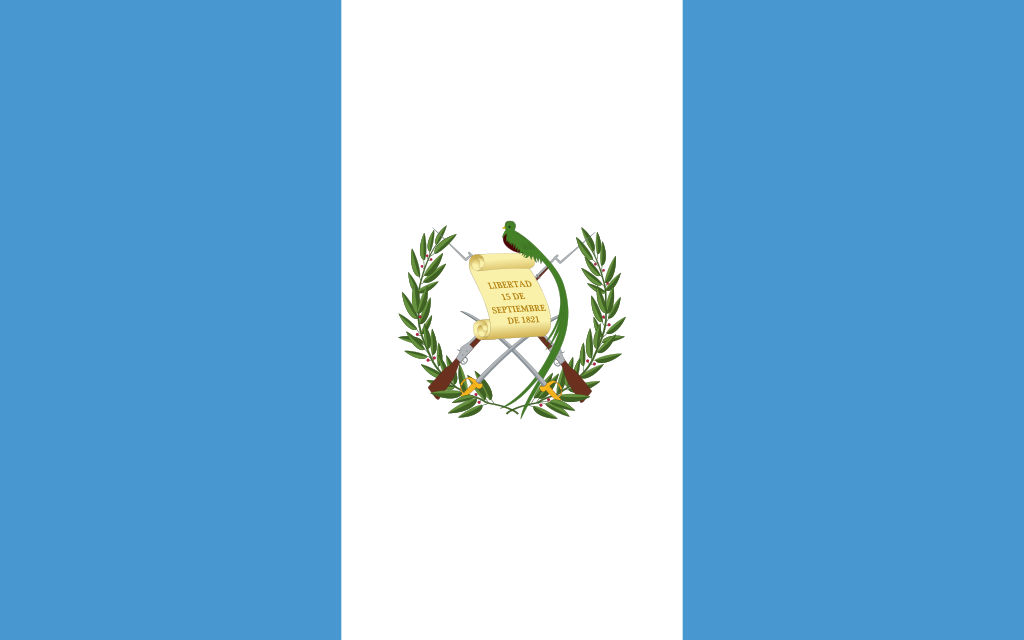
Oaxaca is in the Sierra Madre - the line of mountains that run down the western side of Mexico. For the third time, I crossed this spine to reach the Pacific. Just as it was getting to Oaxaca, the next stint of Highway 175 was a motorcyclist's dream. It constantly wound left and right, up and down through lush tropical forest.
It was only 250km, but leaving at noon proved too optimistic. In late afternoon first came thick white fog, next heavy rain and finally dark. I pulled the pin about an hour after dark, realising that it was insane to continue. This left me in the tiny town of Candelaria Loxicha. The only accommodation was pretty crummy for the price, in that opening a window for relief from the heat invited mosquitoes but the fan only ran like a 747, the room smelled and the sheets were torn. On well, I just had to last until sunrise.
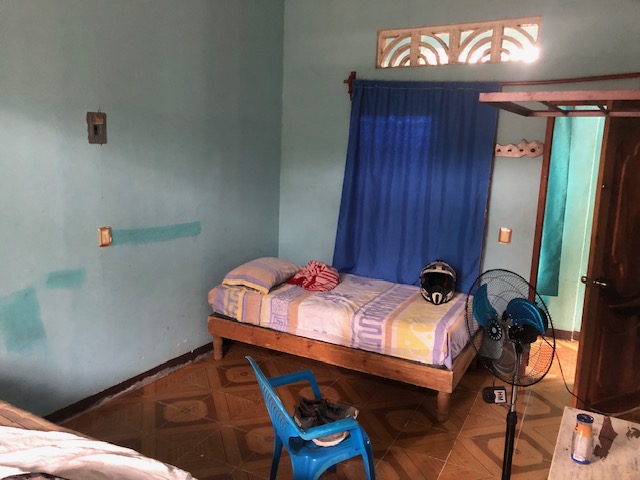
Next day, it still took an hour in daylight to reach the coast, vindicating the previous night's decision.
Puerta Escondido is a fairly lively seaside place.
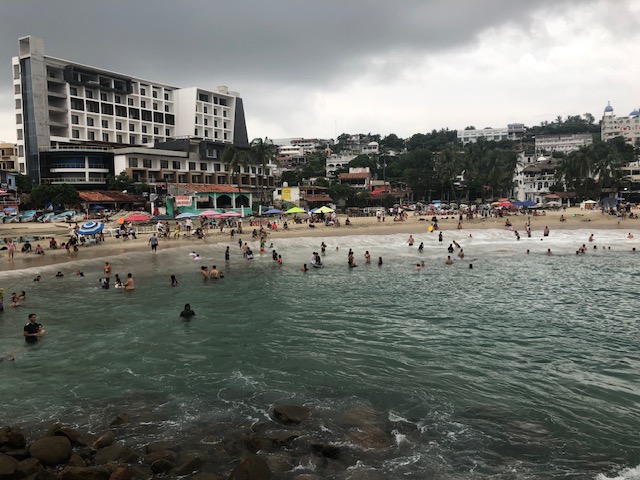
The Mexican street food offerings are terrific. $70MX (~ $5AUD) for five outrageously delicious tacos and a soothing beverage.
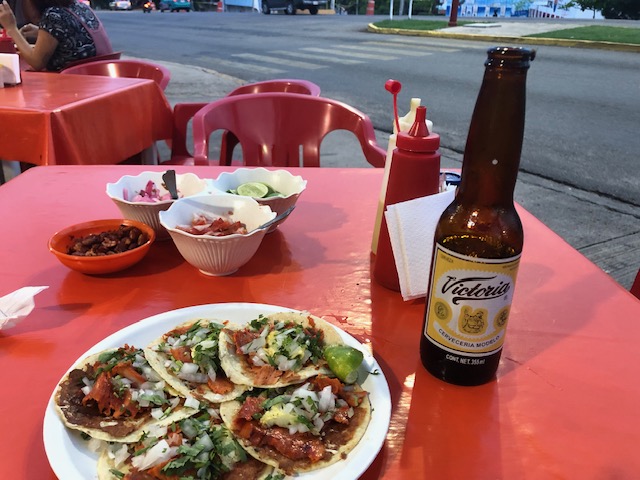
Sorry, not many photos for some days, due to a low enthusiasm patch. Sick of the grittiness around me, frustrated with my poor communication, sick of the busyness that's so unlike my usual life, sick of getting myself lost. Just grumpy all the time.
A couple of incidents in La Crucecita, Huatulco didn't help. I won't bore you with long moaning stories, so will instead summarise:
1) I do stupid stuff
2) when things then go wrong, a poor mood leads to exacerbating stupid decisions
& quite separately 3) a hostel threw the stove's fuel bottle out (eventually recovered, thanks to perseverance).
Here was a brief respite: Barreling along the main Mexican highway 200 that parallels the Pacific, on a whim I pulled in at a sign pointing to Zanjon, without knowing anything about the place. A made road cut through a modest bunch of houses. It became a dirt track alongside crops.
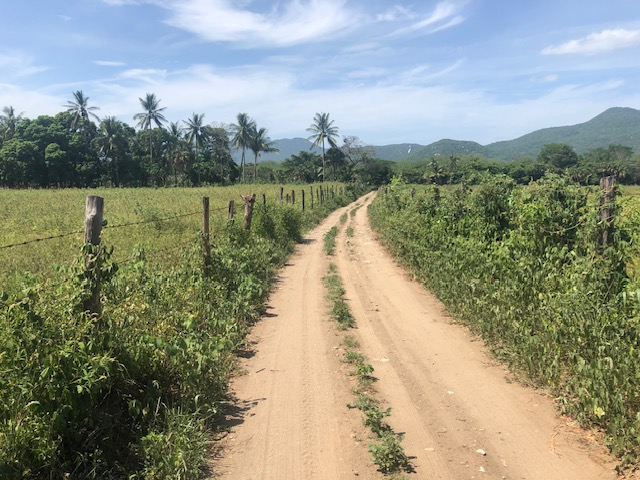
... then ended here.
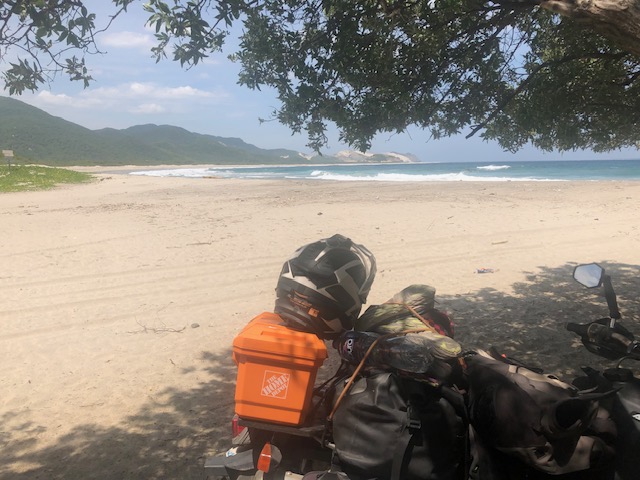
Beautiful.
Via a WhatsApp group that assists riders in Mexico and Central America, I came to meet Yadiel and Mariana who generously put me up in his place in Arriaga. The motivation was that maybe some social contact would lift the mood.
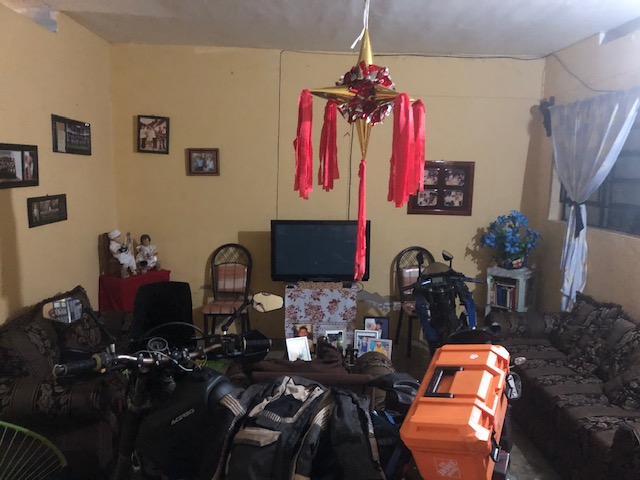
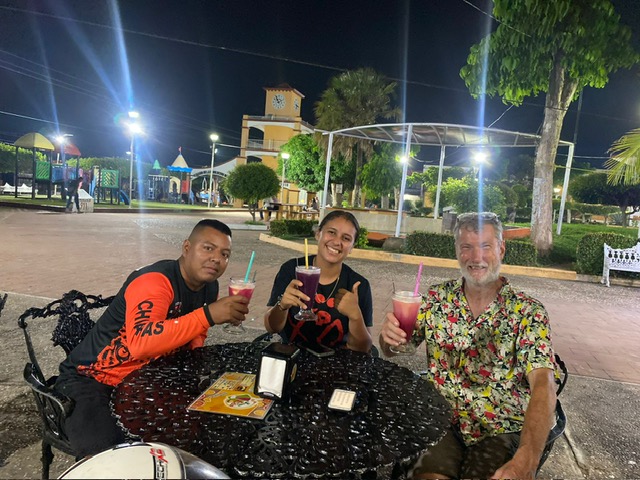
Some in the same WhatsApp group warned against travelling through certain parts of the state of Chiapas. Locals were clashing with police, roadblocks had been erected, travellers wouldn't be able to pass or could be hassled. One local rider saw it differently and advised that all would be well. Confusing.
I had no bloody idea, yet was awfully keen to visit Palenque, a Mayan site of some renown, via those parts. It got frustrating, not knowing what to do.
I just gave up and headed for Guatemala.
Via the same group, I met fellow long distance rider Ignacio just before the border, a Spaniard living in Guatemala for five years. A lovely man. Over a beer he described his adopted country as being a mini Mexico. He meant this geographically, in that it also has mountains, beaches, desert et cetera. He also painted an ugly picture of personal security: always use hotels, don't get distracted by your phone on the street, always take stuff off the bike, no walking after 10pm, blah blah.
None of the personal safety stuff lifted a bloke's mood.
The border crossing was a pain in the arse.
Even before reaching officialdom, "fixers" waved, yelled out, stood in the road and whistled for business. They're unnecessary, insistent and reputed to rip folk off. I pretented to ignore them.
I'll save you the pain of a rambling story. In overview, it involved dealing with multiple staff on either side, sometimes in circles and moving pieces of paper along the way. It took about 2.5 hours.
All the while, crowds walked past the offices in both directions, vendors came through selling all manner of goods, crashed vehicles from the USA were transported south for repair and resale. Yet in all the madness a stray dog brought what looked like a chop bone into the centre of the Guatemalan bureaucracy, lay down and chomped for a while before wandering off. No one was bothered by a bone lying in the path.
No photos - I got told off by a security guard for having a phone out.
In the fullness of time I had some extra documents and less cash, but at least I was moving.
How does Guatemala compare with Mexico?
Here's a through-the-visor comparison from the first few days:
- Landscape: this is volcano territory, so beautiful vistas of lush green hills abound
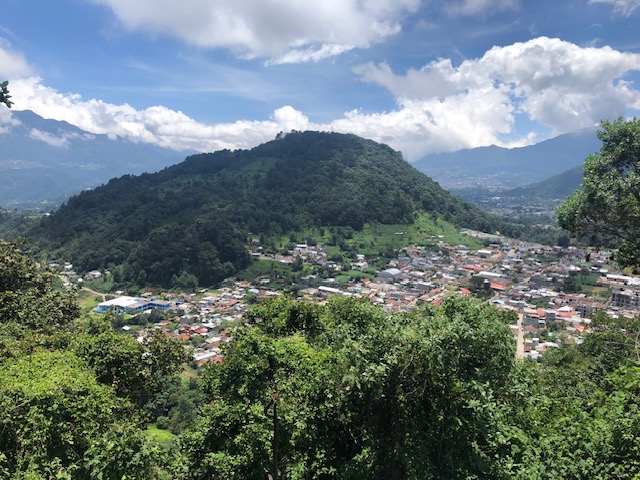
- Litter: same same
The spot shown above, pulling back a few feet.
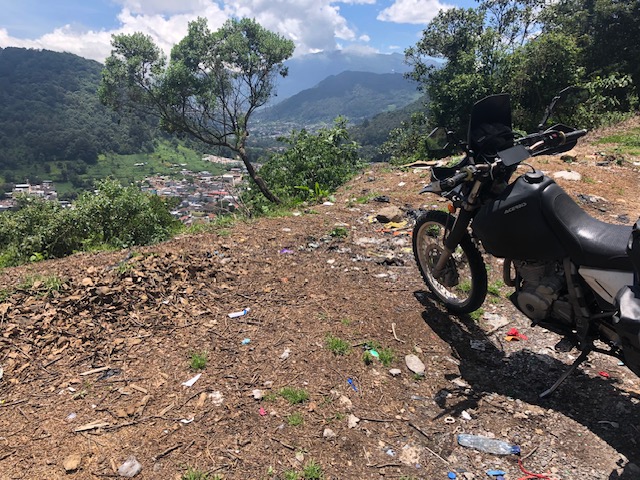
- Language: Signage has some differences
eg. Tyre repair shop in Mexico "vulcanizadora", Guatemala "pinchazio" for puncture/flat tyre
- Female clothes: most ladies of indigenius descent wear colourful full length dresses/skirts + blouses often with a lacy centre piece, sparkles and head wear; these flatter the older ladies while the younger are positively spectacular (cue eye rolling in Emerald)
- Carrying goods: baskets and bags are conveyed on ladies' heads with impressive balance and grace
- Men: same same, still jeans + long sleeved shirt, baseball cap for most, stylish white cowboy hat for older gents, no goods on heads
- Chicken buses: so named because they get loaded with all manner of cargo, maybe even chickens on the roof; they race around mountain roads at breakneck speed, displacing all other road users
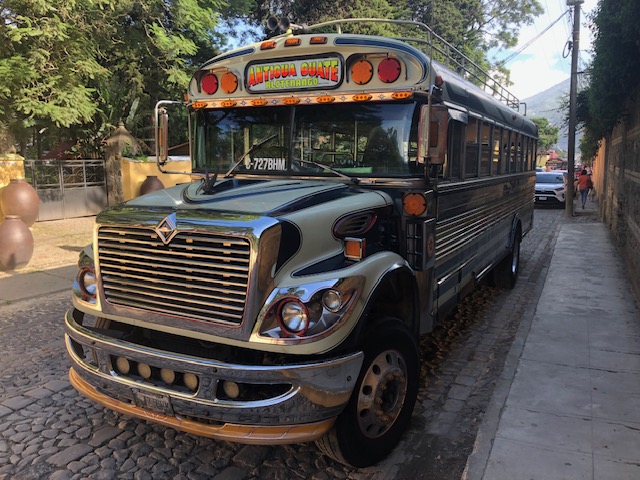
- Tuk Tuks: three wheeled public transport, each can can fit an impossible number of drunk tourists or family members, each decorated in their own extravagant theme
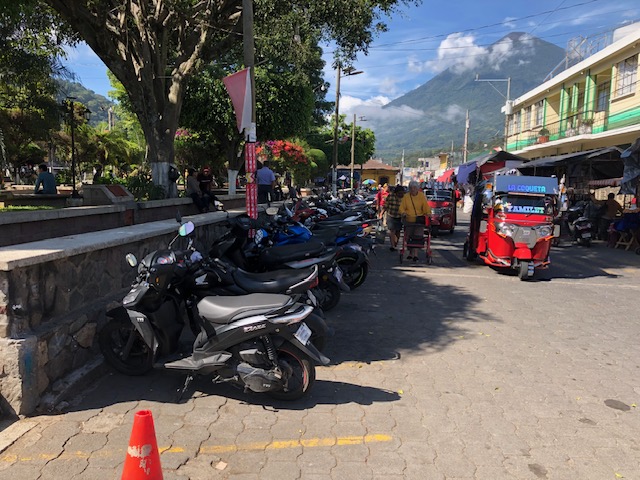
- Private vehicle mix: subtly different, more Japanese bikes but still all singles, more SUVs (many Toyota RAV4s Michelle!), many smaller Toyota utes
- Grittiness: much the same, literally with sand on the road surface, leading to dust plumes
- Breakfast cereals: they must be the same, as it appears the driving licenses come from the same box
- Air pollution: worse, because the winding mountain highways mean slow trucks leading a procession of vehicles, while spewing nauseating black+blue smoke
My Aussie car building mates often complain of having to meet strict emissions limits. I would much prefer to live with those rules than live in hazy, stinky cities.
- Road surface: often far better; many bigger highways have a noticeably thick slab of good tar
- Money: When I needed to pee, I didn't spend a penny - I spent a quetzal
I'm now carrying notes and coins in four different currencies.
Told you about stupid decisions.
- Petrol: Like Mexico, only uniformed attendants operate the pumps
Despite Guatemala using metric, it uses gallons for fuel. Weird.
Quetzaltenango was a nice city. It's the second largest, but hanging out in it's historic centre hid the ugly outer. The locals call it Xela, the pre Spanish name - pronounced almost like "shiela", which I loved.
Every Guatemalan night has featured fireworks. These plus rowdy brass/drum music attracted me to a school parade. Waves of marching boys, baton twirling girls and musicians impressed their families and friends.
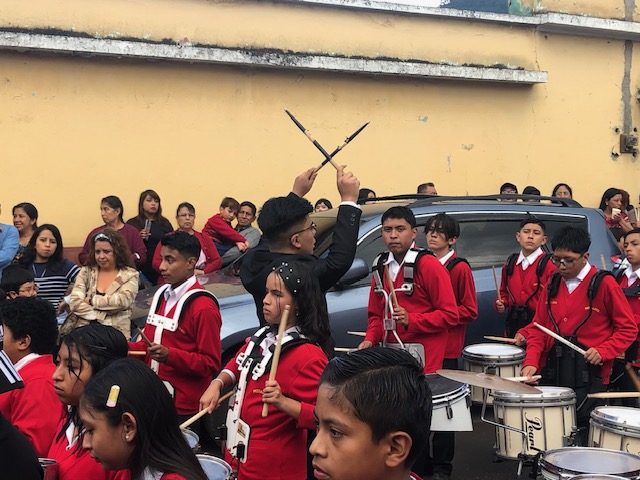
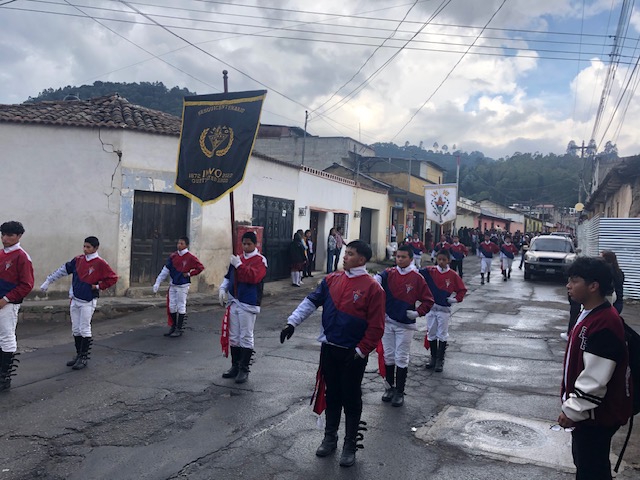
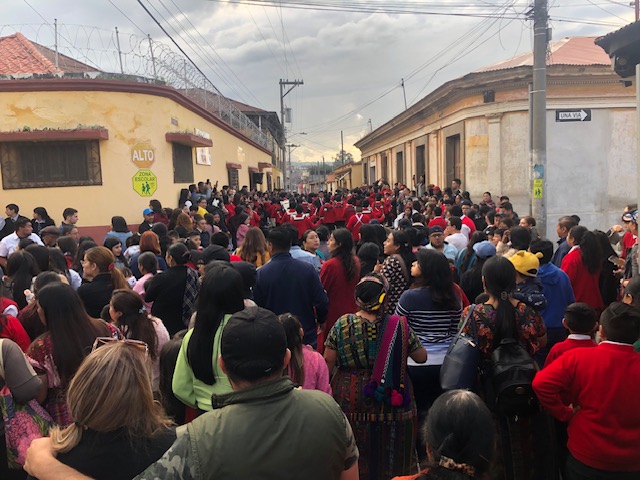
The best part of my Xela stay was a hike up Cerro Candelaria, an extinct volcano overlooking the city. It took a chunk of effort, but was peaceful with few others on the trail - a lovely escape from the clamour.
The trail had a mix of rock clambering and prairie type path.
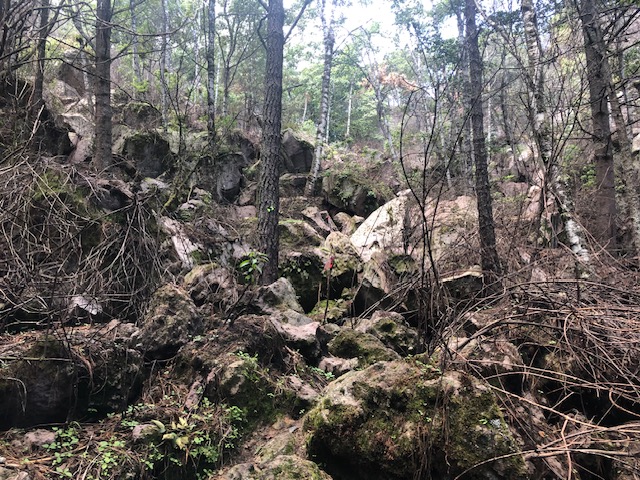
The final rock face required entering a narrow cave ...
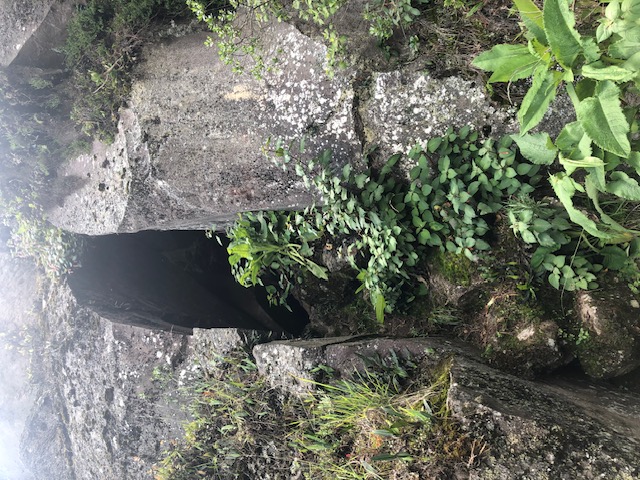
... in which tree branches, ropes and upper body muscle were used ...
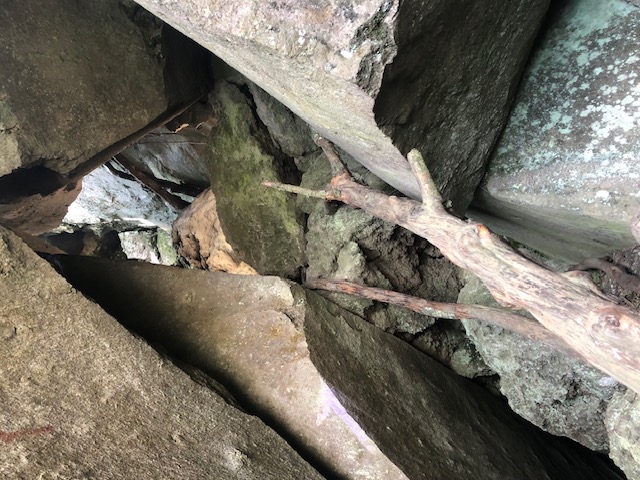
... to reach the summit.
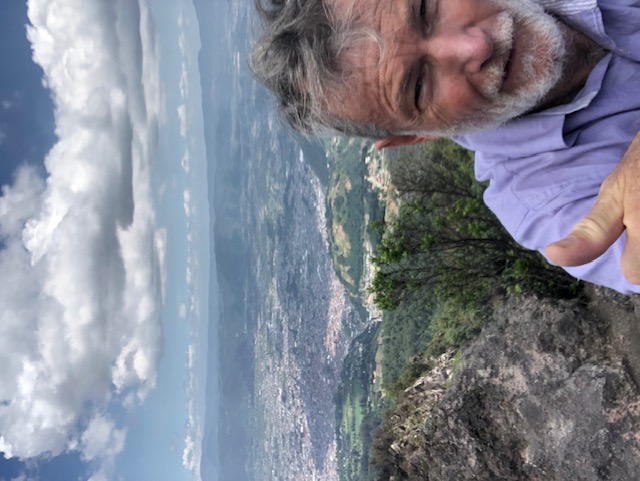
Two friendly fellows at the top shared some chat and a few laughs. One with excellent English recommended having a girlfriend without a common language as a sure fire way of becoming bilingual. This is a strategy I'm unlikely to use.
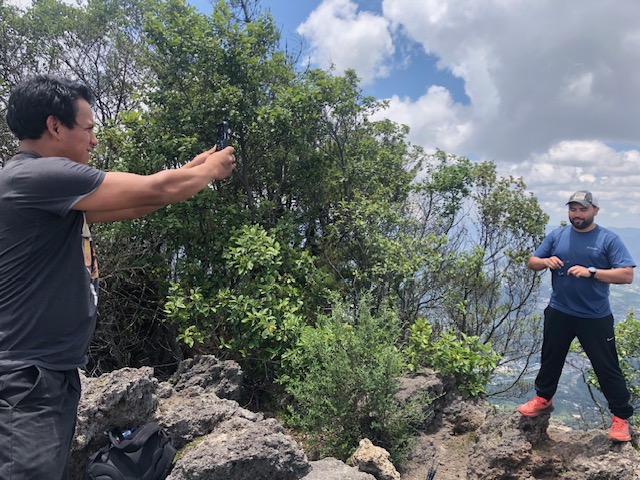
Locals call Lake Atitlán "the most beautiful lake in the world". Three volcanoes dominate it's skyline. I don't think anyone wouldn't be moved the first time they see it. So much wow factor.
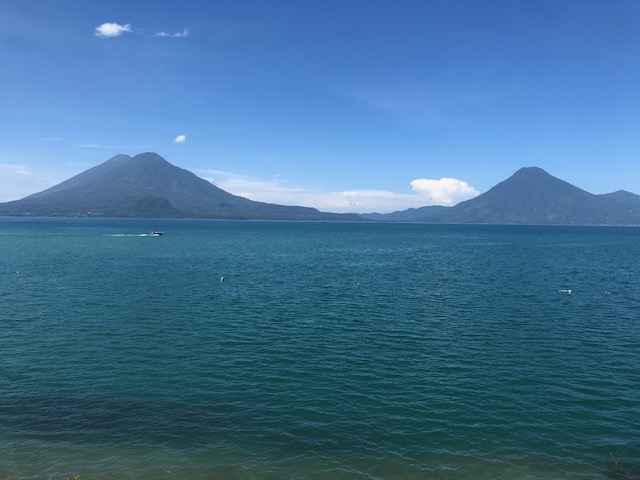
A smattering of towns surround Atitlán, each with their own character. For ease I started in Panajachel. On the plus side, my hotel was hidden down a narrow laneway, in the centre of a block, so was relatively quiet. The lane was so narrow that a resident had to stand his rather slender motorcycle upright, to let the fat arsed Suzuki past. Perhaps it's got breeding hips.
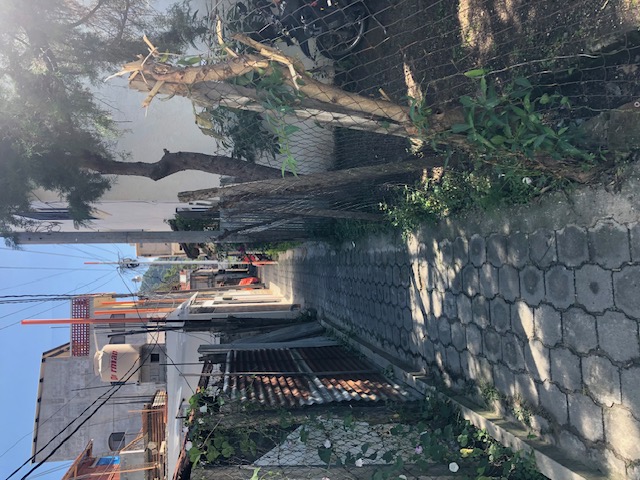
The downside of Pana was its tourist trap intensity. Sellers lined the streets, touting to all passersby and the beachfront wasn't really recognisable with all the stalls. So next day, I choofed off around the lake to an alternative. The short ride took an age, as there were many vistas to soak up.
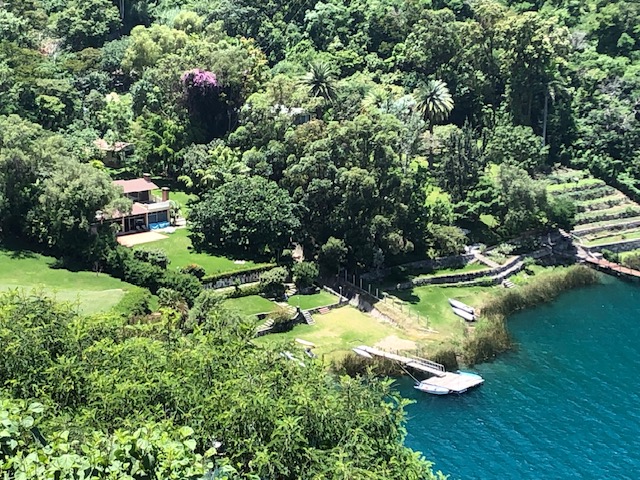
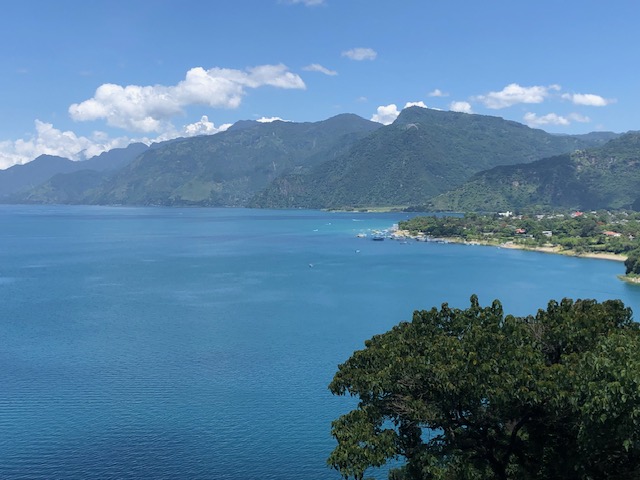
I enjoyed Tolimán more. It was actually louder at night than Pana, but it was all local energy. I recall spotting only three other pale folk like me. A high school band practiced MJ's "Thriller" with a dance troupe.
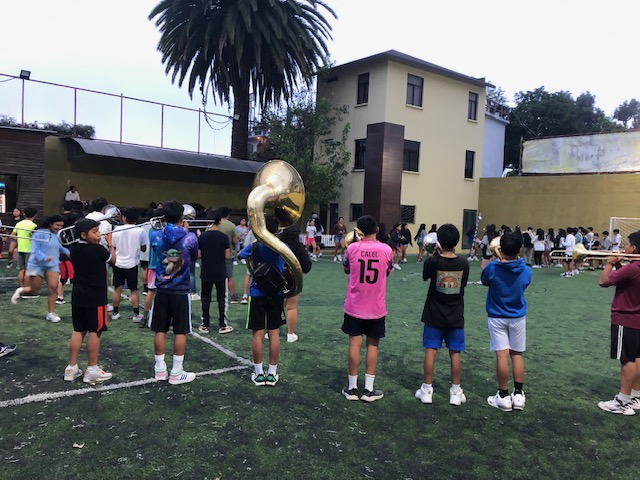
How about this for power delivery infrastructure? It could easily be reached from the balcony outside the taco place. I s'pose it's only 110V.
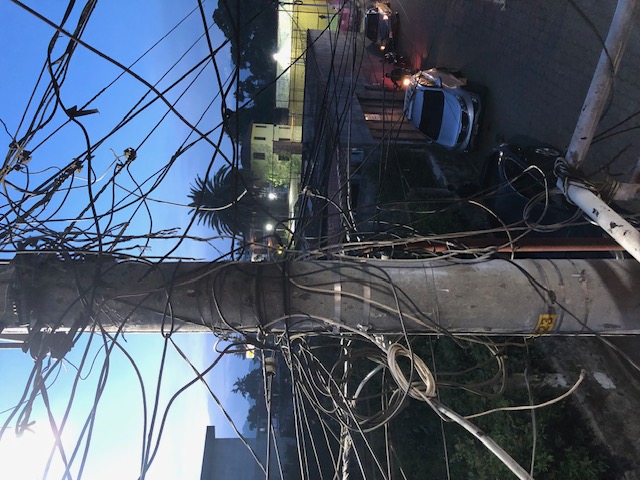
The hostel Casa Qatzij was the nicest place to stay so far. Nice in that it had everything needed, but also a welcoming atmosphere. I couldn't really tell if the young folk there were purely paying guests or partly staff. Regardless, they pitched in running the place with good cheer.
Mauri teaches soccer at the school. He and his girlfriend Nazarena are from Argentina. He walked me down to the lake to help hire a kayak. Nothing in it for him, he was just pleased to walk and talk. He never stopped smiling.
Kayaking was fun. It was a chance to be alone and regain energy, have a swim off rocks and see different parts of shoreline up close with banana trees, women standing in the lake washing clothes, fishermen tending to nets and so on.
Antigua used to be Guatemala's capital, until a 1773 earthquake.
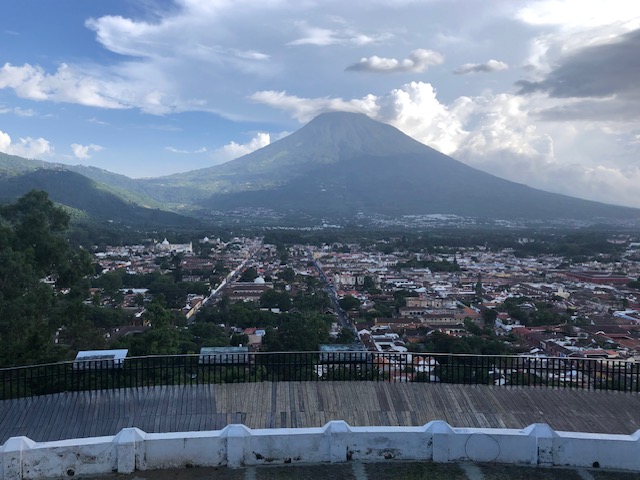
Nowadays it's the country's Disneyland. On neat wide cobblestone streets a plethora of tourists, foreign and domestic, take Instagram shots posing in front of cathedrals and the like. Restaurants of all sorts and bars abound.
All very nice, but for me the big attraction was seeing an active volcano.
Normal mode would be a day hike only, under my own steam. I'm ever so glad I did an overnighter with a tour company instead.
Buses picked up us trekkers from our various digs. We had the hour trip to get familiar.
eg. Hannah was from the Dolomite region of Italy, where German is the first tongue. This made it easy for her to converse with Marco and Nicole from Hanover. It wouldn't have mattered anyway; just about everyone spoke multiple languages.
We ascended dormant volcano Acatenago, initially between cornfields.
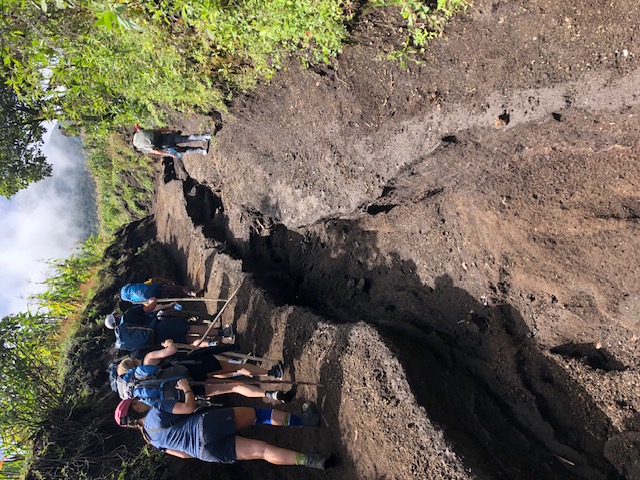
Our guides stressed keeping the 25 strong group together, meaning a SLOW pace and many stops. Normally this would get up my nose, but here it was easy to just shrug and accept. It gave plenty of time to yarn together in different combinations - a bit like a party, or a wedding. Across the board my peers had taken fascinating past trips.
In particular I got along with Winston, a 54yo eye surgeon from Portland, Oregon. I guess being the two oldies amongst these young creatures helped.
One girl was excited that I knew Albury/Wodonga where she came from - the first person in months of travel. I suppose our less salubrious cities are not familiar to the rest of the world.
Farmland gave way to pine forest then open volcanic ash slope.
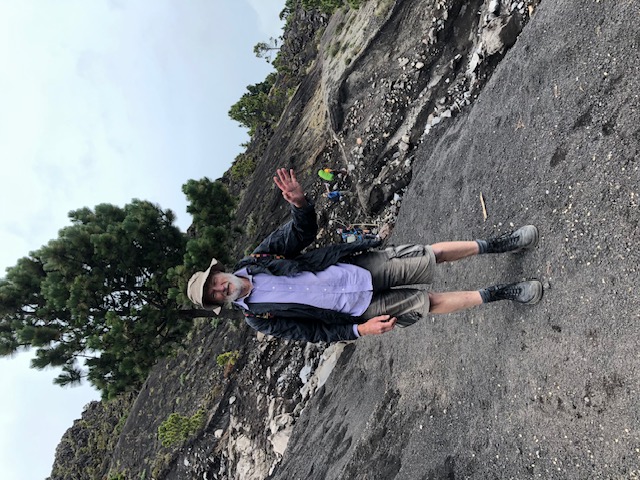
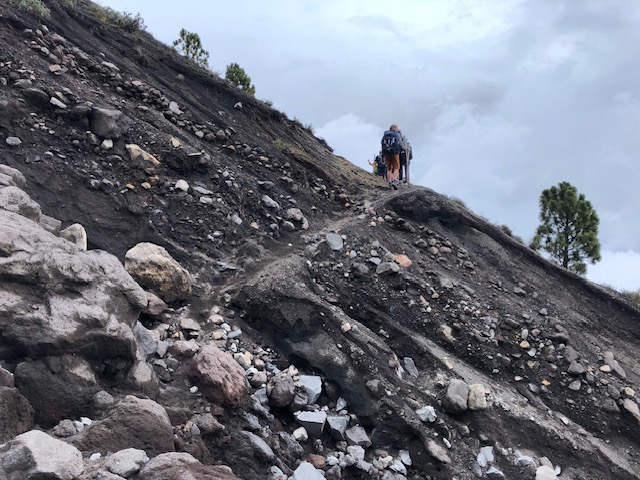
Base camp had a set of timber and sheet steel huts.
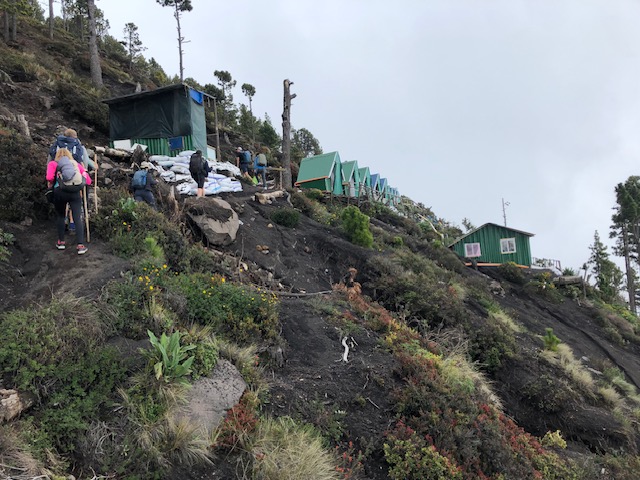
From here we could see the star of the show: Fuego, only 3km away.
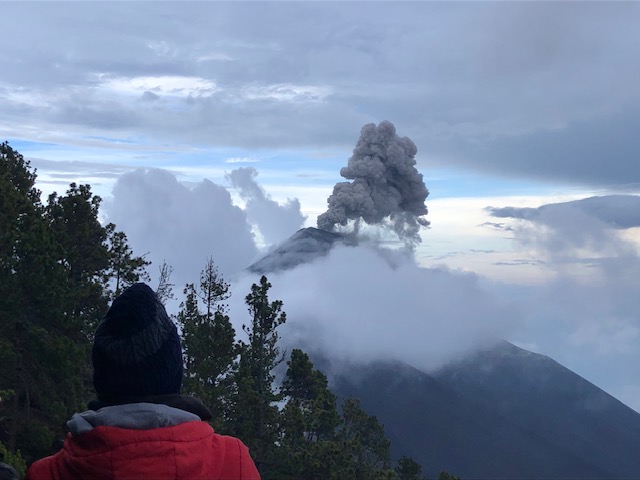
An optional extra was to hike from base camp out on the saddle between the two volcanoes, the selling point being the chance of better eruption views. The ten who went all reported a miserable four hours in pissing rain with no better sights, just lighter pockets. I'd been advised it wasn't worthwhile, so saved my quetzals.
It gets darned cold overnight at 3756m. Even keeping clothes on didn't quite ward off the chill. The thick matress and sleeping bag sure helped though.
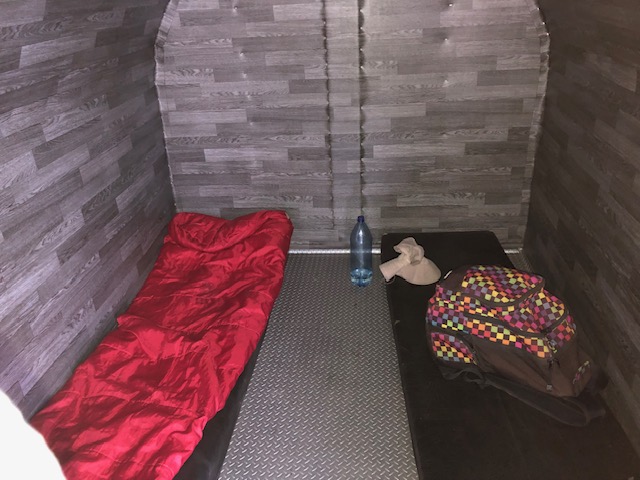
At 4:30am, we set off for the 3976m summit, well in time for sunrise.
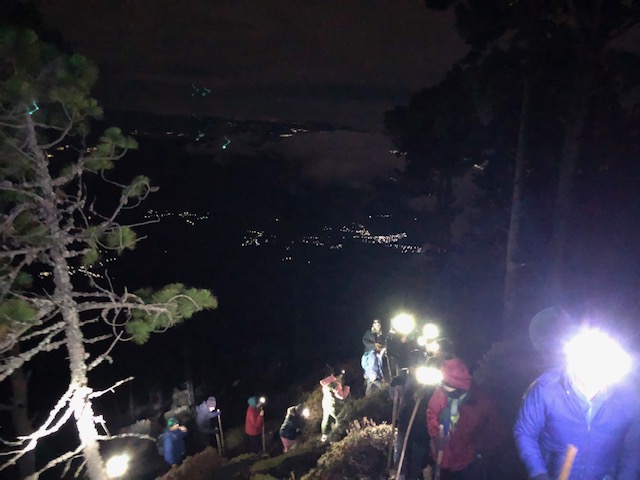
I can't convey the magic.
Fuego threw out red lava a few times an hour with a big rumble, the moon was almost full, lightning flashed in multiple places, stars twinkled overhead and city lights shone below as Sol started his routine.
As the dawn progressed, more features below were apparent: the coastline, Lake Atitlán with her own peaks, a string of volcanoes beyond her.
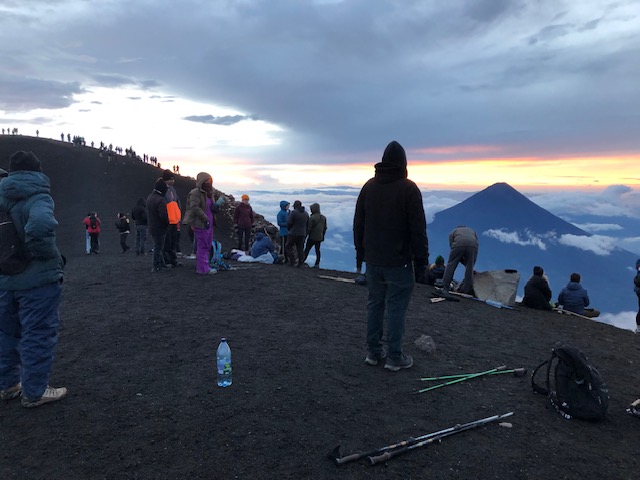
Pretty cool.

